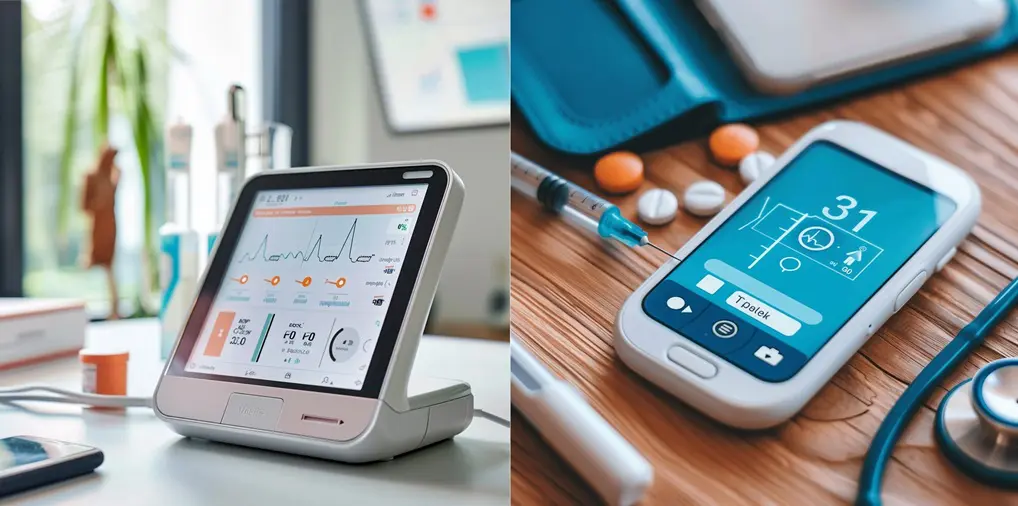Introduction: The Growing Need for Innovative Diabetes Care
Diabetes Management remains one of the most challenging chronic diseases to manage, affecting millions globally. Traditional management methods often fall short in providing the consistent monitoring and timely interventions needed. Enter Remote Patient Monitoring (RPM) — a technological advancement that promises to revolutionize diabetes care by enabling continuous oversight and real-time data utilization.
Understanding Diabetes and Its Impacts
The Burden of Diabetes
Diabetes is a chronic condition characterized by high levels of glucose in the blood, which over time can lead to serious damage to the heart, blood vessels, eyes, kidneys, and nerves. Managing these levels is crucial but challenging, often requiring constant vigilance which can be exhausting for patients and healthcare providers alike.
Challenges in Traditional Diabetes Management
Traditional diabetes management involves regular visits to healthcare providers, periodic blood sugar monitoring, and managing insulin doses based on these intermittent readings. However, this snapshot approach can miss fluctuations and doesn’t provide patients or doctors with a comprehensive view of a patient’s glucose levels throughout the day.
The Role of RPM in Diabetes Management
What is Remote Patient Monitoring?
Remote Patient Monitoring (RPM) utilizes digital technologies to collect medical and other health data from individuals in one location and electronically transmit that information securely to healthcare providers in a different location. RPM allows for continuous monitoring of health data, providing a more dynamic and responsive approach to care.
RPM Technology in Action
For diabetic patients, RPM can include the use of devices like continuous glucose monitors (CGM) that track blood sugar levels throughout the day. This data is sent in real-time to healthcare providers, who can track these levels and make recommendations or adjustments to treatment plans almost immediately.
Benefits of RPM for Diabetes Patients
Improved Glycemic Control Continuous monitoring allows for a more nuanced understanding of how different factors like diet, activity, and medication affect blood glucose levels. This can lead to better glycemic control, reducing the risk of complications such as diabetic retinopathy or kidney disease.
Enhanced Patient Engagement and Education RPM empowers patients by providing them with real-time insights into their health metrics. This ongoing feedback loop enhances patient engagement, as individuals understand more about their condition and the direct impact of their lifestyle choices on their health.
Reduction in Hospitalizations and Healthcare Costs By preventing extreme fluctuations in blood glucose levels and providing early detection of potential issues, RPM can significantly reduce the need for emergency care and hospitalizations. This not only improves quality of life for patients but also reduces overall healthcare costs.
Implementing RPM in Diabetes Care
Integration with Existing Healthcare Practices Incorporating RPM into existing healthcare practices requires minimal disruption. Current diabetes management can be enhanced with the addition of RPM devices without completely overhauling existing protocols.
Training and Support for Healthcare Providers Healthcare providers need to be trained on how to effectively use RPM technology and interpret the data provided. Ongoing support for these systems is crucial to ensure they are used effectively to deliver optimal patient care.
Patient Onboarding and Compliance Patient education is crucial in ensuring compliance with RPM technologies. Patients need to understand how to use devices correctly and the importance of maintaining consistent monitoring.
Conclusion: The Future of Diabetes Care
Remote Patient Monitoring represents a significant leap forward in the management of diabetes. By providing continuous, real-time monitoring, RPM empowers healthcare providers and patients with the data and tools needed for more precise and effective diabetes management. As technology advances, the integration of RPM in chronic disease management, particularly diabetes, is poised to become a standard of care, promising a future where diabetes is no longer a burdensome disease but a manageable condition. Contact Us

No responses yet